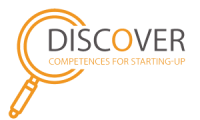Creativity, visionary and innovative thinking, sense of opportunities
1. Playfulness
One approach to enhancing creativity is to (re)introduce playfulness in your thinking: By playing, social structures and normative behavior can be temporarily abandoned which can generate novel ideas and thinking patterns.
Here, we are using exercises in playful exploration which are particularly suited for practicing creativity on your own. Both exercises aim at reducing self-editing to a minimum as the fear of judgment limits creativity. At this stage, we actually want to favor quantity over quality, trying to move away from notions of ideas being right and wrong and, thus, training the ability to think outside the box.
30 Circles
Use the template provided here, or just draw 30 circles on a piece of paper. Set a timer for three minutes and in this time turn as many circles as possible into objects.
Remember: Quality does not matter!
When the 3 minutes are up, check how many circles you filled in. Then try to analyze if you followed any patterns (Did you draw a lot of food items or balls or planets?). Try to think if you were following any assumed rules or did you break any? Is there a fluency or story to your objects?
Complete the Incomplete Figure
This exercise is borrowed from the Torrance Test of Creative Thinking. Choose one of the templates provided here and complete the incomplete figures into completed ones.
Again, this is not about the quality of your drawing skills!
You can complete several pictures or try to come up with a variety of versions for one. When you have finished, try to come up with titles for your pictures. Is there a story behind them?
2. Divergent Thinking
Creativity means finding unusual solutions and leaving the known path. Therefore you should specifically train your divergent thinking abilities!
How Many Uses Game
This is also called the 100 ways or Paper Clip test. Find an everyday object (like a paper clip), set yourself a time limit (like 15 Minutes), and try to come up with as many (or 100) ways to use it apart from its actual purpose.
The exercise can be enhanced by introducing a second, unrelated object, e.g. finding 100 ways of using a paperclip and a spoon.
What if…
Find a newspaper article and reimagine it, changing one detail about the story and asking yourself “What if…”. Rewrite the story with the changed detail—how would events have been different?
Mind Map
Set a timer for 15-60 minutes, depending on your preference. In the beginning, you might want to take your time to get the hang of this exercise.
Write your central topic in the middle of a large piece of paper. Then think about things that are related to your topic, drawing branches from the center. Then use those branches to think about other connections, and so on…
After your time is up, have a look at how the original topic has developed—where did you end up? Are there new ideas you hadn’t thought of before? New ways of thinking? Which branches did not spur new ones? Could you have gone on? What areas would you like to expand on?
There are various online tools for creating mind maps, for example:
